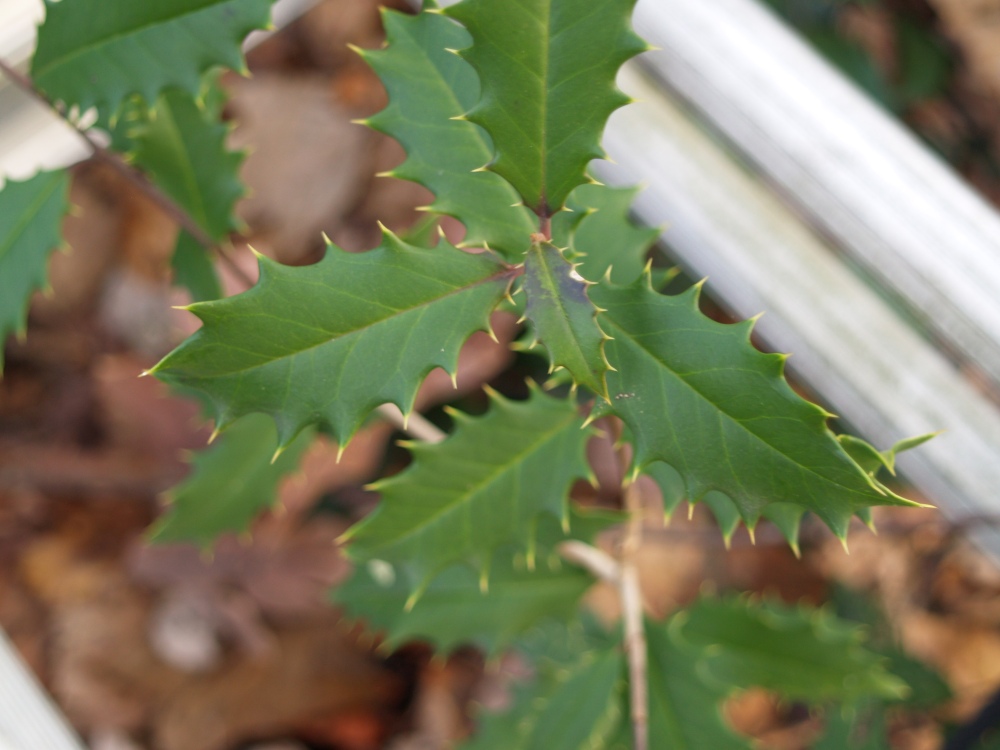Along the southern border of the garden is a two hundred foot wide swath of forest bisected by a small creek. The mature poplars and maples are remnants of forest left to stand at the edge of farmland that has been converted into housing lots of an acre or more. In the past twenty years the developer has harvested select hardwoods so that the forest’s canopy is now more open, and understory growth accustomed to the dense shade has struggled and been replaced by weedy multiflora roses and brambles. 
In the filtered sunlight numerous native American hollies (Ilex opaca, above) have sprouted from seed introduced by visiting birds, though the parent plants are not nearby. On occasion I dig out and otherwise attempt to control weedy growth, but encourage the hollies, dogwoods, and sassafras. The hollies are evidence of the genetic diversity that results from seedlings, and though all exhibit the distinctive dull green foliage of American hollies, the structure of the leaves (size, shape, quantity and prominence of spines) is unique from plant to plant.
American hollies are quite slow in growth, and in the shady understory with root competition from the maples few have grown taller than knee high over ten years. Given time the hollies will grow into fine, tall evergreens, and birds will feast on the red berries, but I am not likely to witness this in my lifetime.
A number of American hollies are cultivated by nurseries, with some selected for heavy crops of berries, and others for more rapid or fuller growth. Selections are propagated by rooted cuttings to assure desirable traits, but all are troublesome, difficult to transplant and too slow growing to develop a full plant within a reasonable period. Thus, other hollies that are easier to grow and transplant (and have more desirable glossy green foliage) are more widely available through nurseries.
‘Nellie R. Stevens’ (above) is the stalwart of the nursery trade, with dark leaves, vigorous pyramidal growth, and abundant red berries, but there are a number of excellent hollies that offer variations in height, spread, shape, and foliage color. 
‘Dragon Lady’ (above) is a more upright, somewhat more narrow growing holly, with black green leaves with notable spines, and a few degrees greater cold tolerance than Nellie Stevens. Berries seem to be less numerous than with other similar hollies, but Dragon Lady is a superb choice for use in screening or as a single plant. ‘Centennial Girl’ (below) is similar in appearance, though slower growing, and with foliage that is not quite so darkly colored, but also lacks the sharp spines.
English and Koeheana hollies (below) offer more abundant berries, and a broad pyramidal shape, though cold hardiness is not as great. Boughs of English holly loaded with red berries are typically used in holiday displays.
In my garden these hollies, as well as ‘Christmas Jewel’ (below), ‘Mary Nell’, ‘Patriot’, ‘Little Red’, ‘Cardinal’, and ‘Festive’, are scattered throughout. Some were planted to screen and enclose the garden, to provide food and shelter for birds, and others simply because I enjoy their commanding presence and cheerful berries. 